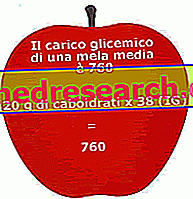Generality
What is Xanthan or Xanthan Gum?
Xanthan or xanthan gum is a complex carbohydrate, a polysaccharide with a high molecular weight obtained by bacterial fermentation of a simple carbon hydrate, such as glucose or sucrose.

Production of Xanthan
To produce xanthan gum, natural strains of Xanthomonas campestris are used, hence its name.
The product obtained from this microbial fermentation is purified by extraction with ethanol, or with propan-2-ol, then dried and ground to obtain xanthan gum . The latter comes in the form of a cream-colored powder, particularly soluble in water or brine, but insoluble in alcohol.
Composition of Xanthan Gum
As anticipated, we are talking about a complex carbohydrate, a polysaccharide made up of monomers of simple sugars. Among these, the main hexoses (sugars with six carbon atoms), are D-glucose and D-mannose, while the concentration of D-glucuronic and pyruvic acids is also noteworthy.
Xanthan applications
Xanthan gum is used:
- In the dietary and nutritional integration field (which we will discuss in more detail in the next chapters)
- In the pharmaceutical field
- As a food additive
- In cosmetics.
Xanthan gum as a food additive
Xanthan gum recognizes numerous applications in the food sector, where it is used as a thickening and stabilizing additive, marked with the abbreviation E415. A minimal addition of this additive (0.5-1% or less) greatly increases the viscosity of a beverage or the texture (consistency) of a food.
Xanthan gum is used for example in the formulation of sauces, sauces, desserts and gluten-free foods, because - thanks to the thixotropic properties of its dispersions - these products can be heated or refrigerated without losing thickness.
Example of a recipe with Xanthan
Homemade Margarine
Homemade Margarine - Vegetable Butter
X Go to the Video Page Go to the Video Recipes Section Watch the video on youtubeSee all Recipes with xanthan gum
Let us briefly recall that thixotropism is that phenomenon in which a colloidal system can pass from the state of sol to that of gel, passing from mechanical agitation to one of stillness, and vice versa. From a rheological point of view, xanthan gum therefore has intermediate properties between those of a solution and those of a gel. At rest (for example when the ketchup is inside the container or spread on the chips), the xanthan increases in consistency, and then decreases when it is subjected to mechanical shearing forces (for example when we shake the ketchup bottle before use).
Xanthan gum in the cosmetic and pharmaceutical fields
To learn more, read: Xanthan gum in cosmetics »
In the cosmetic and pharmaceutical field, xanthan gum is an excellent stabilizer for suspensions and emulsions (in essence it prevents the separation of the various ingredients).
Indications
When to use Xantana Rubber?
Xanthan or xanthan gum is used as a food supplement in order to increase:
- palatability
- satiating power
- consistency
of certain types of food, in particular:
- low in fat and calories (light or low fat)
- bakery products without gluten (for celiacs)
- powder replacement meals.
Property and Effectiveness
What benefit has Xantan shown during the studies?
Because xanthan gum efficiently absorbs water, it facilitates stool transit by counteracting constipation.
According to a study, which included the administration of xanthan gum to 10 healthy volunteers for 10 days, this product proved to be a highly effective laxative.
Xanthan is also able to modulate the absorption of carbohydrates by decreasing the glycemic and insulin index of meals; therefore, it is a valid ally against hyperglycemia, hypertriglyceridemia and type 2 diabetes mellitus.
Doses and Mode of Use
How to use Xanthan
Information on the dosage of xanthan or xanthan gum as a dietary supplement is few and not defined. However, there are several indications of use as an additive, but these are applications with totally different purposes.
The dose of xanthan gum aimed at fighting constipation is indicatively 15 g / day with plenty of water. Note : usually this dosage cannot be achieved with normal consumption of supplements and foods containing it.
As a dietary supplement to combat hyperglycemia, we recommend about 12 / g of xanthan gum, to be taken after meals with plenty of water.
Side effects
Some people react significantly to lower amounts of xanthan than the average, developing symptoms of intestinal bloating and diarrhea.
It is good to remember that xanthan gum can be obtained from products containing common allergens, such as wheat, wheat, milk and soy. Therefore, sensitive persons must refrain from consumption or inquire about the origin of the product.
Allergic or food intolerance reactions mainly concern the protein components of corn, soy and wheat. For example, gluten has been detected in significant quantities but less than 20 ppm of gluten, which is the EU limit for "gluten-free" labeling.
Note : taking xanthan or xanthan gum without taking the right amount of water can give rise to intestinal constipation.
Contraindications
When should Xanthan not be used?
Xanthan or xanthan gum is a fairly safe product, but contraindications still exist:
- It is above all contraindicated in the presence of certain pharmacological therapies (in general, it should never be taken together with a drug or other supplements), allergic sensitivity, intolerance and intestinal pathologies (chronic inflammatory diseases, diarrhea, irritable bowel syndrome, intestinal resections, etc. .)
- It is good to remember that in certain situations, or with the presence of some symptoms, it is not recommended to take any laxative that could worsen the clinical picture or conceal a serious illness. These symptoms are: nausea, vomiting, appendicitis, hard and hard-to-expel stools (fecal constipation), narrowing or blockage of the intestine or idiopathic stomach pain.
- It is responsible for a specific work risk: the assessment of workers exposed to this dust has shown a link between the product and some respiratory symptoms.
- May be harmful to newborns: on May 20, 2011, the FDA (Food and Drug Administration) issued a press release referring to "SimplyThick", a food thickener containing xanthan or xanthan gum. The warning, referring to parents, health care workers and suppliers was not to feed the children with this product, due to the lack of data on the possible impact on the health of the little ones. The concern was that the product could cause necrotizing enterocolitis (NEC) in premature infants.
Pharmacological Interactions
Which drugs or foods can modify the effect of Xanthan?
Xanthan or xanthan gum should be avoided in the case of drug therapy in use or concomitant use of dietary supplements with laxative purpose. This last contraindication does not depend on a possible chemical reaction, but on the risk of synergistic activity between laxatives, with the appearance of severe diarrhea and malnutrition.
Xanthan or xanthan gum can also interact with diabetes drug therapy. By reducing the absorption of sugars, this product can promote hypoglycemia. Some medications used for diabetes include:
- Glimepiride
- Glyburide
- Insulin
- Pioglitazone
- Rosiglitazone
- chlorpropamide
- Glipizide
- Tolbutamide.
Precautions for Use
What do you need to know before taking Xanthan?
Except as mentioned in the paragraphs on side effects, contraindications and drug interactions, no other precautions are recommended for the use of xanthan or xanthan gum.
It is advisable to stop using it at least two weeks before any surgery, as there is the possibility that it may change the glycemic condition in the medium term.



